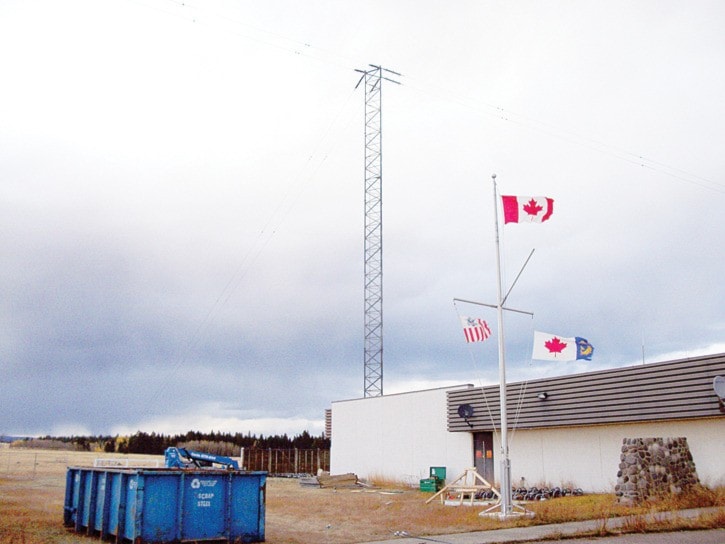Perhaps better known as a local landmark, but functionally and formerly used as a navigational tool for military and civilian ships at sea, a mainstay on the Cariboo-Chilcotin landscape is coming down.
The Loran-C tower near Riske Creek is in the process of being dismantled after its signal was terminated by both the Canadian and U.S. Coast Guard services in 2010.
The Loran-C (Long Range Navigation) was a terrestrial radio navigation system that used low-frequency radio transmitters in multiple deployment (triangulation) to determine the location and speed of the receiver (ship).
Since 1977 the Cariboo-Chilcotin tower worked in concert with towers in Washington and Alaska states to help ships determine their locations.
Each Loran-C station was within a group of three to five transmitting stations known as a chain and transmitted a 100 kilohertz frequency between stations. Each station sends a series of eight navigational pulses, with a user area up to 1,000 miles from the transmitting station. In recent years widespread use of Global Positioning Satellites rendered the Loran-C obsolete.
All U.S. Loran-C stations ceased transmitting Oct. 1, 2010. An advisory issued by the Canadian Coast Guard on Jan. 20, 2010 said, “Loran-C systems in Canada and the U.S. work in tandem. Once the U.S. service is discontinued, the Canadian system will not be operational. Consequently Canada will also decommission its Loran-C system in 2010.”
Local resident and former B.C. Tel employee Graham Smith says he was at the tower and adjoining building when they were commissioned. And although he did not work on the project, he says B.C. Tel set up the tower’s data circuits as well as provided regular phone service through to Riske Creek to replace the crank phone service of the day in order for the project to be realized.
Smith says the Riske Creek location was chosen because it was in a “big, flat field.”
“It has the right characteristics for transmitting the signal for thousands of miles.”
Smith says the tower’s signal was a low frequency — 10 times lower than AM radio — and followed the Earth’s curvature.
The 625-foot tower is being taken down the same way it was installed, in sections, Smith says. He wonders what will become of the adjacent building he describes as self-contained.
“It’s been a landmark for at least 25 years there. To see it all of a sudden gone within a few days was kind of amazing.”
An official from the Department of Fisheries and Oceans Coast Guard says the next step is to remove hydrocarbons from the site. The area will then be placed in “cold storage” mode.
